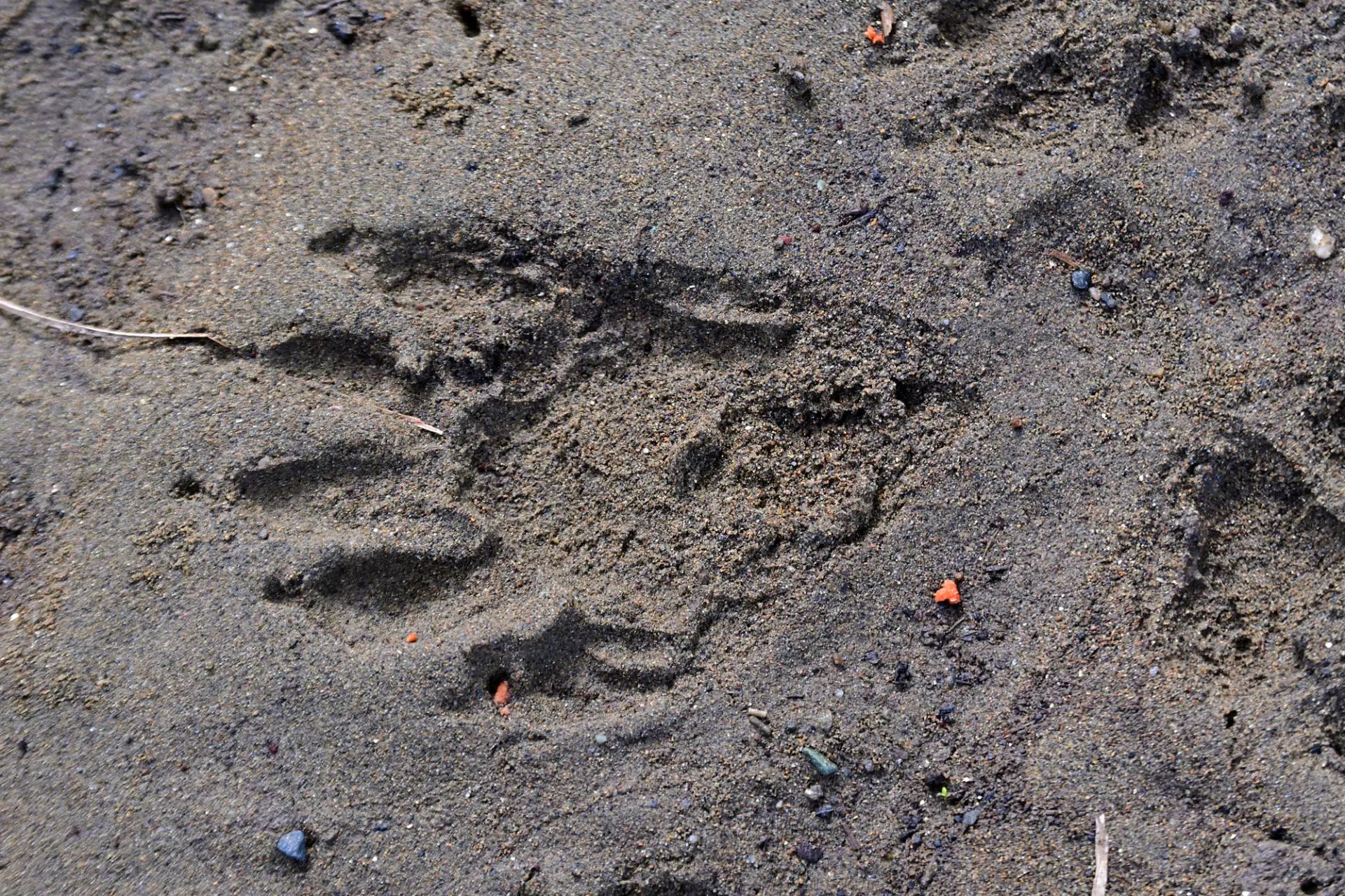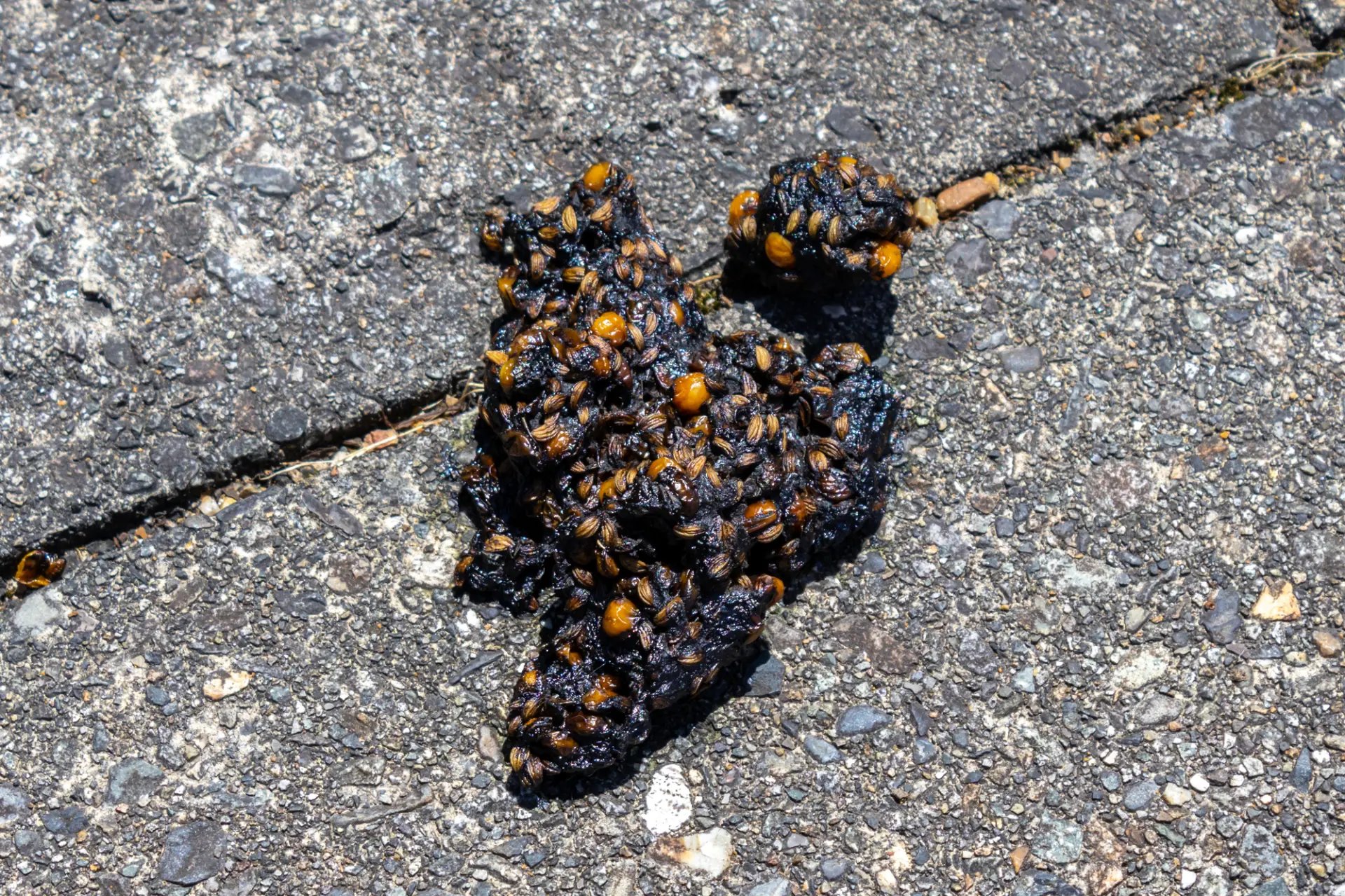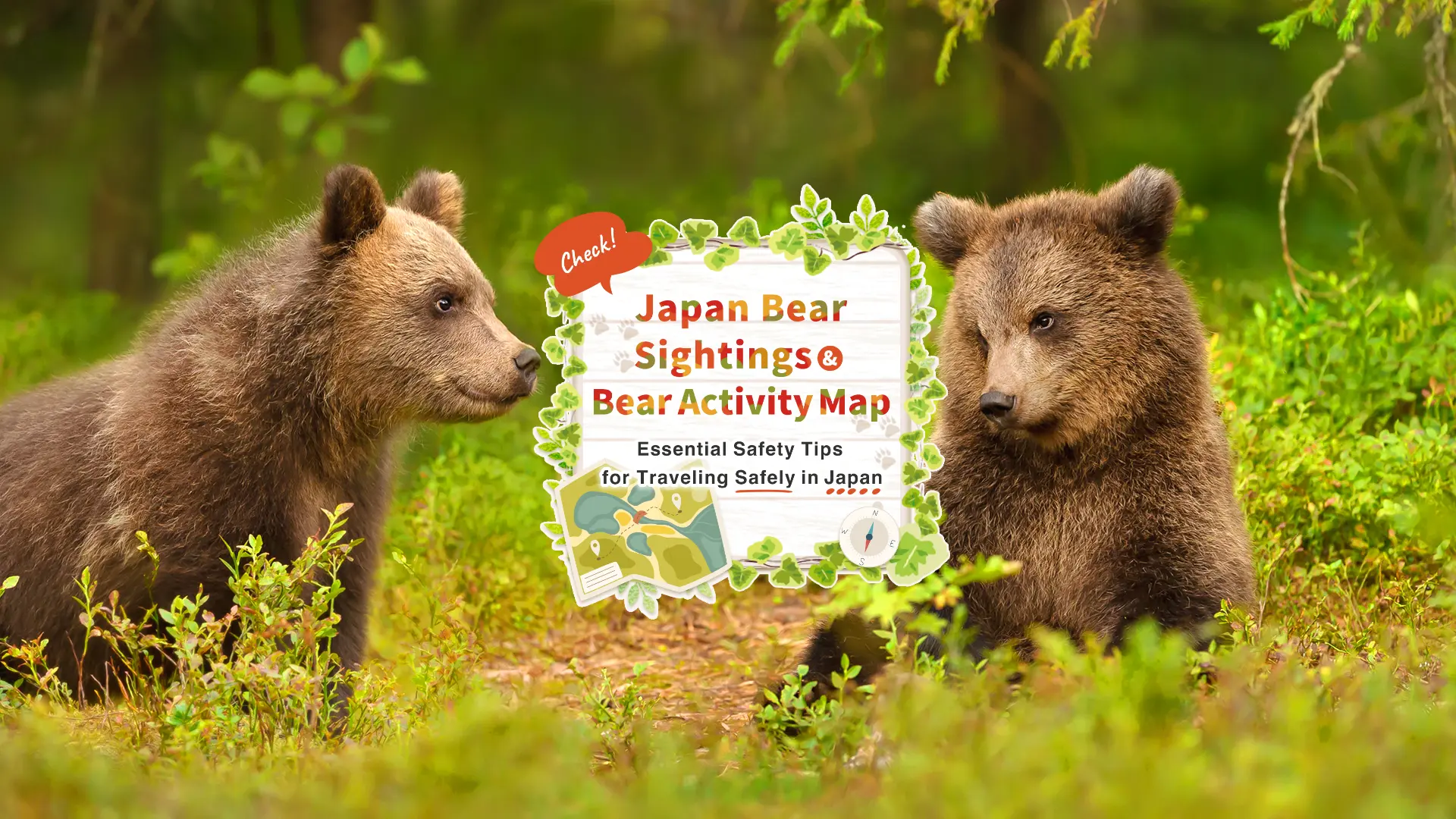
Japan Bear Sightings & Bear Activity Map - Essential Safety Tips for Traveling Safely in Japan
In the fall of 2025, bear sightings and bear-related incidents have been reported almost daily in Japan.
Many people may feel uneasy after seeing these news reports.
The situation is serious, but that does not mean every area is dangerous. With the right knowledge and proper precautions, there is no need to be more afraid than necessary.
This article gives a broad overview of bears in Japan. It covers their behavior and habitat, areas where they appear, essential safety tips, and what to do if you encounter a bear.
By reading to the end, you will understand the current bear situation and be able to enjoy your trip to Japan safely and with peace of mind.
Types of bears in Japan and their characteristics
Two types of bears live in Japan: brown bears found across almost all of Hokkaido, and Asian black bears found on Honshu and Shikoku.
Their characteristics are as follows.
| Type | Body length / weight (average) | Characteristics / temperament |
|---|---|---|
| Brown bear (Higuma) |
Males: length 1.5–2 m, weight 150–250 kg Females: length 1.4–1.7 m, weight 60–150 kg |
・One of the largest land mammals in Japan ・Omnivorous (eats a wide variety of foods such as salmon and nuts) ・Very curious, and can become aggressive when hungry or startled |
| Asian black bear (Tsukinowaguma) |
Males: length 1.2–1.5 m, weight 40–100 kg Females: length 1–1.3 m, weight 30–60 kg |
・Usually has a white crescent-shaped mark on the chest (though some individuals do not) ・Omnivorous (mainly eats plant fruits and insects) ・Generally quiet and timid, and tends to avoid people |
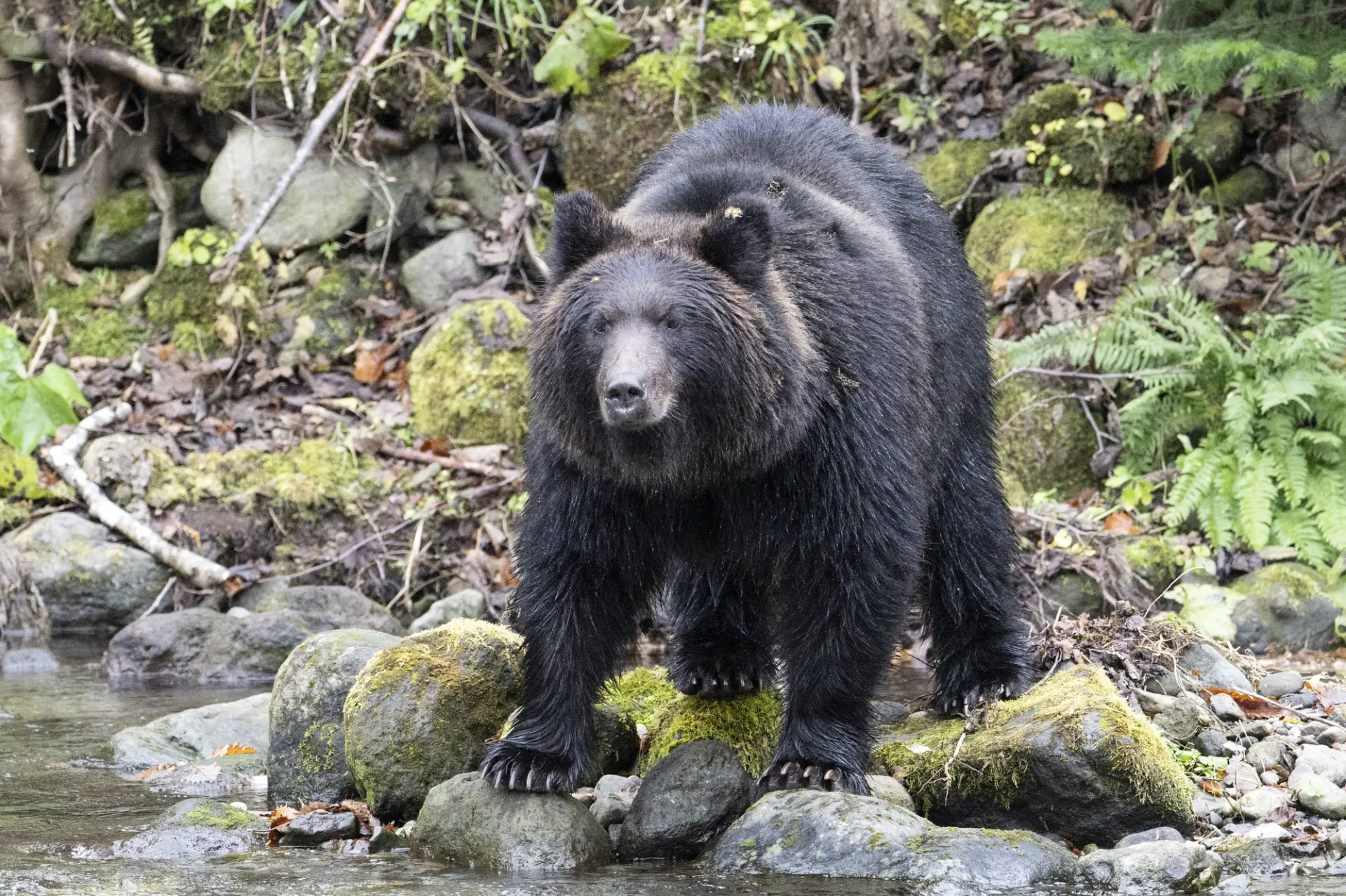
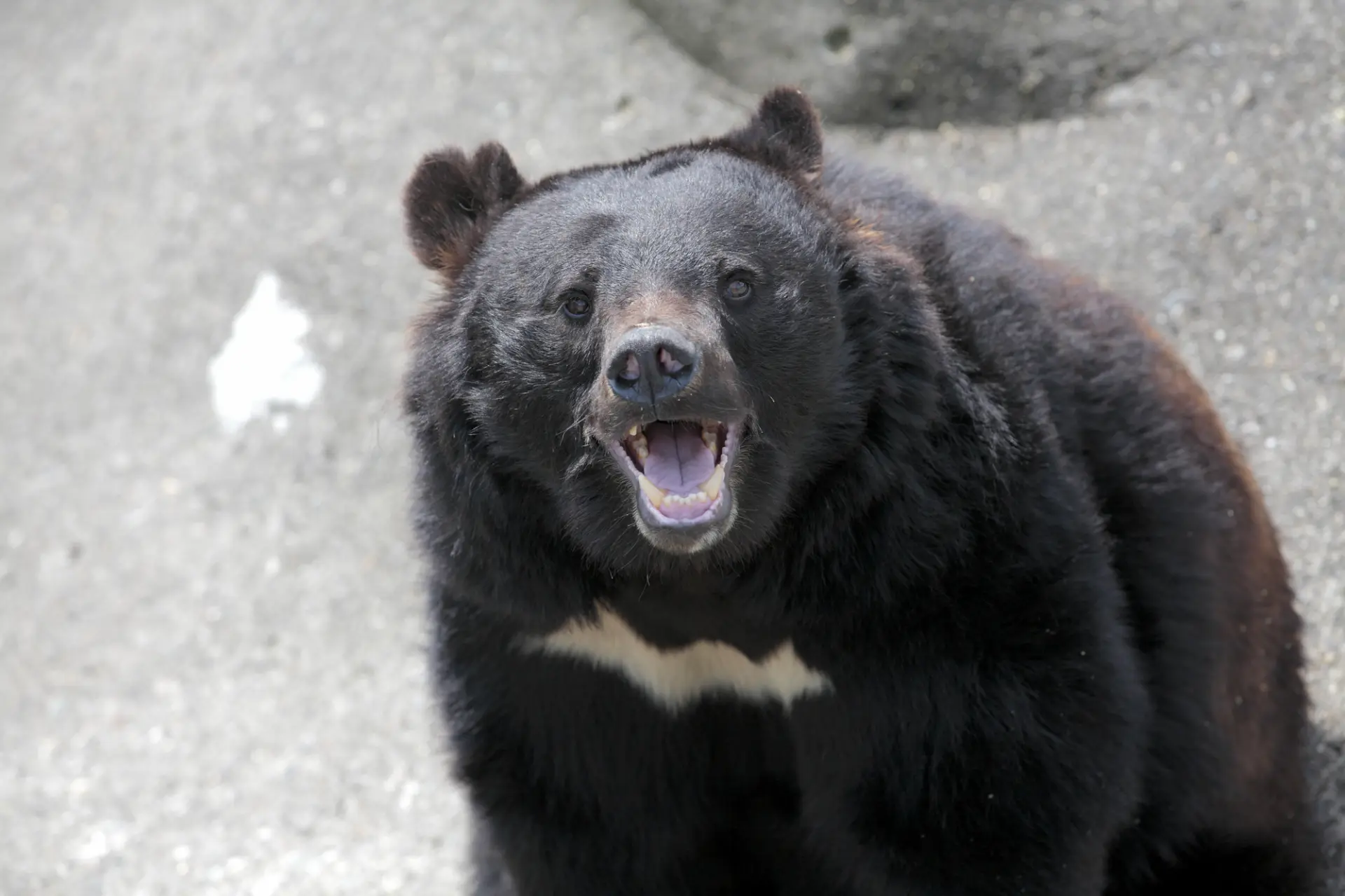
Ecology of Bears in Japan
From spring to summer, bears lose weight. In fall, their appetite increases and they enter a period of heavy feeding. They actively search for food to prepare for hibernation.
They are generally diurnal. In fall, however, they become crepuscular, and their active hours extend to include nighttime.
This widens the hours when people may encounter bears in villages and on mountain trails. As a result, bear sightings and damage tend to increase in fall.
Depending on the region and climate, many bears enter hibernation, when they stop eating, from late November to around December. They usually emerge between March and May.
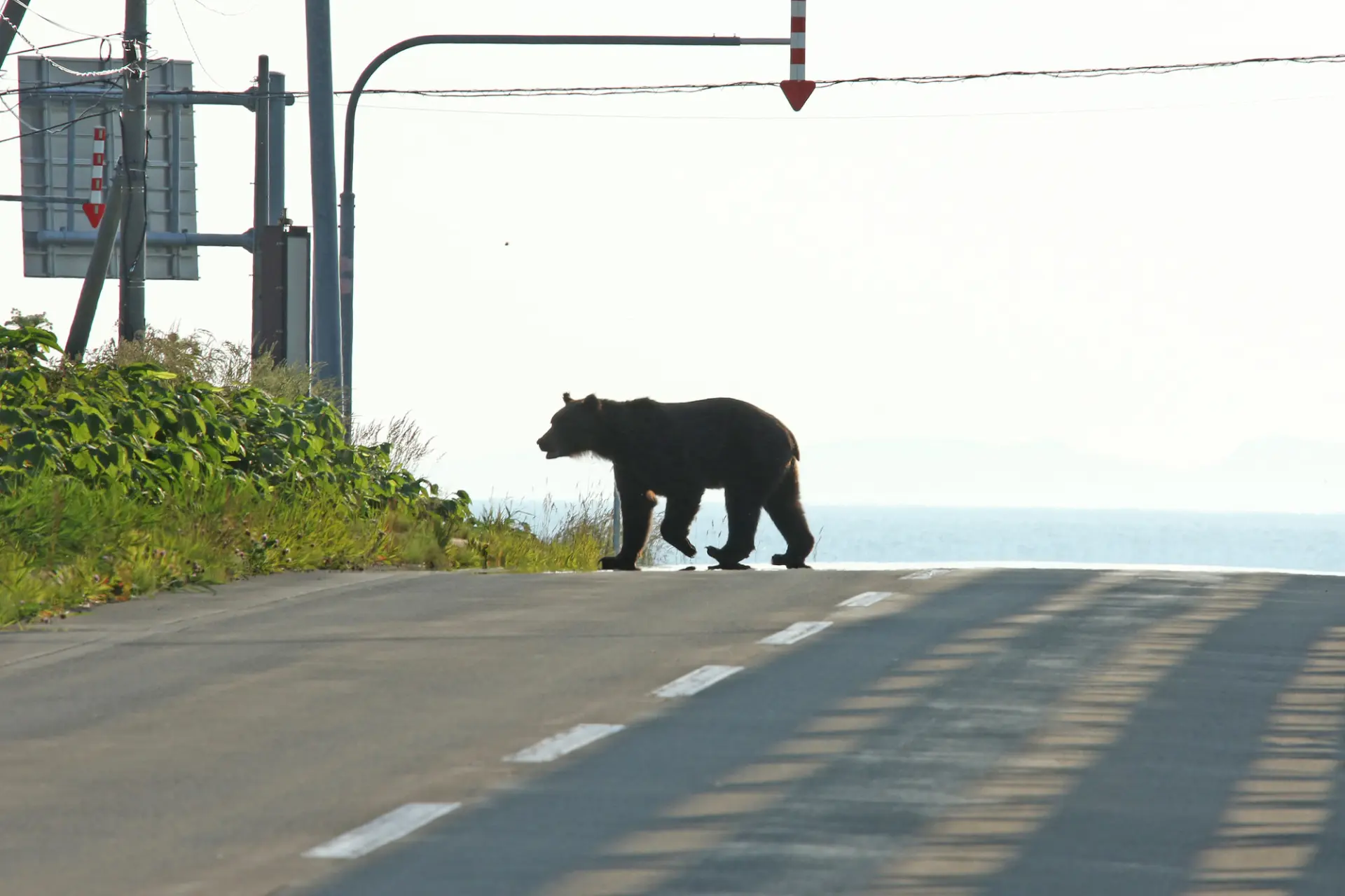
Bear sightings and damage are on the rise in 2025
In 2025, Japan is seeing bear sightings and attacks on people increase at a record pace.
There are many overlapping causes, but in short, it is the result of complex changes in both the natural environment and society.
In recent years, poor harvests and declines in nuts like beech and mizunara acorns have made it hard for bears to find enough food in the mountains, so they are appearing in villages more often.
Disrupted ecosystems caused by climate change and extreme weather are another factor.
Rural depopulation and an aging population have also led to the loss of satoyama buffer zones, blurring the boundaries of human living areas.
On top of that, the rise of “urban bears” that do not fear people and wander into residential neighborhoods and tourist spots shows how serious the situation is.
In other words, the bear issue is not just a short-term problem. It needs long-term measures.

Number of Bear Sightings and Human Injuries Across Japan
The table below shows the number of bear sightings and human injury cases by area from April to September 2025.
Hokkaido has not released its bear sighting data. Kyushu and Okinawa are not included in the survey because bears do not live there.
| Area | Number of sightings | Number of injury cases |
|---|---|---|
| Hokkaido | No published data | 4 |
| Tohoku | 11,198 | 61 |
| Kanto | 845 | 7 |
| Chubu | 1,419 | 30 |
| Hokuriku | 1,836 | 11 |
| Kansai | 1,102 | 5 |
| Chugoku | 1,005 | 1 |
| Shikoku | 10 | 0 |
| Kyushu | - | 0 |
| Okinawa | - | 0 |
Bear sighting maps across Japan to check in advance
Here are bear sighting maps created by prefectural governments and other public organizations.
These maps show bear distribution by prefecture and region, helping you avoid danger and damage in advance.
Some prefectures do not have maps yet, but if you are planning a trip to Japan, check the maps for the areas you will visit and plan a safe itinerary.
Bear Sighting Maps | Hokkaido and Tohoku Region
Check the bear sighting maps for Hokkaido and the Tohoku region (Aomori, Akita, Iwate, Miyagi, Yamagata, and Fukushima) from the links below.
- Hokkaido
- Higumap
- Aomori
- Bear Sighting Map
- Akita
- Kumadas
- Iwate
- Asian Black Bear Incident Map
- Yamagata
- R7 Bear Sighting Map
- Miyagi
- FY 2025 Bear Sighting Information Map
- Fukushima
- FY 2025 Bear Sighting Map
Bear Sighting Maps in the Kanto Region
Bear Sighting Maps in the Chubu Region
Here are the bear sighting maps for each prefecture in the Chubu region (Yamanashi, Nagano, Gifu, Shizuoka, and Aichi).
As of November 2025, there is no bear sighting map for Aichi.
- Yamanashi
- Asian Black Bear Sighting Map
- Nagano
- FY 2025 Asian Black Bear Information Map
- Gifu
- Gifu Bear Map
- Shizuoka
- FY 2025 Bear Sighting Map
Bear Sighting Maps in the Hokuriku Region
Bear sighting maps for the Hokuriku region, which includes Niigata, Toyama, Ishikawa, and Fukui, are listed below.
- Niigata
- Niigata Bear Sighting Map (Latest FY 2025 Info)
- Toyama
- Kumapp (Bear Map)
- Ishikawa
- FY 2025 Asian Black Bear Sightings &Tracks
- Fukui
- Fukui Bear Information
Bear Sighting Maps in the Kansai Region
Bear Sighting Maps in the Chugoku Region
Check the bear sighting maps for each prefecture in the Chugoku region (Tottori, Shimane, Okayama, Hiroshima, and Yamaguchi) using the links below.
As of November 2025, there are no bear sighting maps for Okayama or Hiroshima.
- Tottori & Shimane
- Shimane & Tottori Bear Sighting Map
- Yamaguchi
- YP Kumapp 2025
Bear Sighting Maps in the Shikoku Region
In Shikoku, which consists of Tokushima, Kagawa, Ehime, and Kochi, bear sighting maps are available only for Kochi and Tokushima.
- Kochi & Tokushima
- Asian Black Bear Sighting Information
“Bear Encounter AI Prediction Map” that estimates your risk of encountering bears
The “Bear Encounter AI Prediction Map” is an online map that uses artificial intelligence (AI) to scientifically predict the risk of bear encounters across Japan and shows dangerous areas in a visual way.
A research team at Sophia University is developing it. They use machine learning to analyze and predict risks based on a wide range of environmental data, including past bear encounter records, terrain, vegetation, population distribution, and weather conditions.
The map also shows precision and recall, so you can get a sense of where bears are more likely to appear.
As of December 8, 2025, it covers 25 areas, including Sapporo, Akita Prefecture, and Tokyo. You can view detailed information on each area’s page.
The map divides the area into 1 km squares and shows risk in five levels, from “very high” to “low,” using a color gradient. The closer the color is to red, the higher the chance of encountering a bear.
However, its main purpose is to raise awareness, and it is still under development, so it does not guarantee completely accurate information.
Even so, there are cases where the predictions have been spot on. It can help you take safety measures in advance, so it is a good idea to use this map together with the latest information from local municipalities.

Best areas for travelers who want to relax without worrying about bears
If you want to avoid bear encounters, plan a trip to regions where bears rarely appear or do not live at all.
Recommended areas are Chiba, Shikoku, Kyushu, and Okinawa.
In these four regions, the risk of coming into contact with wild bears is extremely low, so you can enjoy nature while staying safe and worry-free.
Each area has its own charm, including beautiful seas, historic townscapes, famous entertainment facilities, and some of Japan’s top hot spring resorts. One of the Highlights is that you can choose where to go depending on who you travel with and what you want to do.
These areas are especially suitable for families with small children and for people who love outdoor activities such as camping and hiking.
From here, we will introduce the appeal of each region and its popular sightseeing spots. Use it as a guide when choosing your destination.
Chiba: great for day trips from Tokyo
Chiba is in the southeastern part of the Kanto region, stretching out to the east of Tokyo.
Most of the prefecture is made up of the Boso Peninsula, with relatively flat terrain surrounded by the Pacific Ocean and Tokyo Bay.
It is home to Narita International Airport, Japan’s main international gateway, making it an important hub for both travelers and businesspeople from Japan and abroad.
Access from central Tokyo is excellent, and there is a wide variety of attractions, from natural scenery and leisure spots to history and culture.
You can also enjoy nature-rich spots with peace of mind, such as Nokogiriyama, known for its lush nature and historical sites, and Yoro Valley, famous for its autumn foliage. That’s another big plus.
Local gourmet food is also a draw, including fresh seafood and unique regional dishes.
Here are some of the most popular sightseeing spots in Chiba.
1. Tokyo Disneyland
A large theme park loved as the “Kingdom of Dreams and Magic,” Approx 15 minutes by train from Tokyo Station.
The park is divided into the following seven themed areas. Be sure not to miss the entertainment such as parades.
In particular, “Tokyo Disneyland Electrical Parade Dreamlights,” which draws you into a fantasy world with lights and music, is a must-see.

2. Kamogawa Sea World
Kamogawa Sea World in Kamogawa City, Chiba, is an aquarium theme park based on the concept of “Encounter with the Sea.” Approx 800 species and 11,000 marine animals and fish are kept here.
Through exhibits that recreate natural environments and dynamic performances, you can feel the warmth of living creatures and learn how important the surrounding environment is.

3. Naritasan Shinshoji Temple
This historic temple was founded in 940 by High Priest Kansho. It originated from prayers offered for the end of the Taira no Masakado rebellion.
The principal image, Fudo Myo-o, is said to have been consecrated with heartfelt prayers by Kobo Daishi Kukai, the founder of the Shingon Buddhist sect.
When you visit, you can go up into the Main Hall and pay your respects to Fudo Myo-o.
Plays featuring Fudo Myo-o were performed by the famous kabuki family Ichikawa. These performances helped the faith spread among ordinary people.
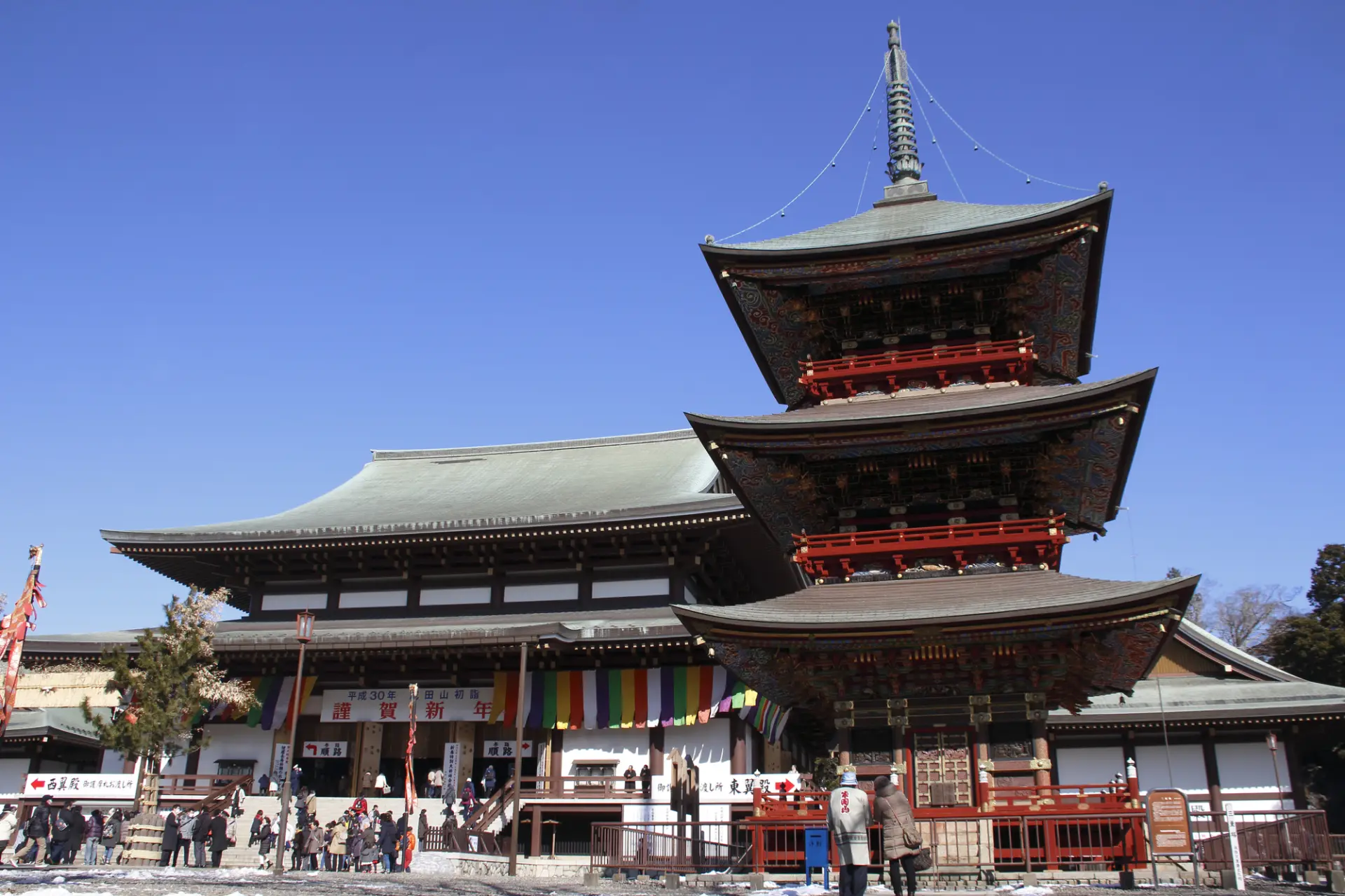
The Shikoku region | Rich in nature and history
Shikoku is one of Japan’s four main islands, located to the southwest of Honshu between the Seto Inland Sea and the Pacific Ocean.
It is made up of four prefectures: Ehime, Kagawa, Kochi, and Tokushima.
Each area has its own charm, where untouched nature and long‑standing traditions coexist at a relaxed pace.
You can enjoy a wide range of experiences. These include local food with strong regional character, outdoor activities like hiking, cycling, and kayaking, and historic hot spring towns.
The island is relatively compact, so it is also great for a trip that goes all the way around Shikoku.
Here are three of Shikoku’s must‑see spots.
1. Matsuyama Castle
Matsuyama Castle is the symbol of Matsuyama City and is also famous as an impregnable fortress. Including the main keep, it has 21 Important Cultural Properties, with many highlights such as the keep, Ichinomon Gate, and Shichikumon Gate. Inside the keep, valuable historical materials are on display.
It is also interesting to see the various defensive features that made the castle so hard to capture, such as lift‑up lattice windows, loopholes, and stone‑drop openings.
You can try on armor and visit a matchlock gun experience corner, and get a feel for history while taking photos.

2. Ritsurin Garden
Ritsurin Garden was built as a villa for the lords of the Matsudaira clan of the Takamatsu Domain. Generations of lords added to and remodeled it, and it was completed nearly 300 years ago.
The flat garden area alone is a spacious 16 hectares, and together with Mt. Shiun in the background, the grounds cover Approx 75 hectares. Among cultural heritage gardens designated as Special Places of Scenic Beauty in Japan, it is the largest in the country.

3. Niyodo River
The Niyodo River rises on Mt. Ishizuchi, the highest peak in western Japan, and flows Approx 124 km through Ehime and Kochi Prefectures. It is one of Shikoku’s three great rivers.
It has repeatedly been ranked as having the best water quality in Japan. Its exceptional clarity and uniquely deep blue color have earned it the nickname “Niyodo Blue.” Many visitors come to see this stunning scenery for themselves.
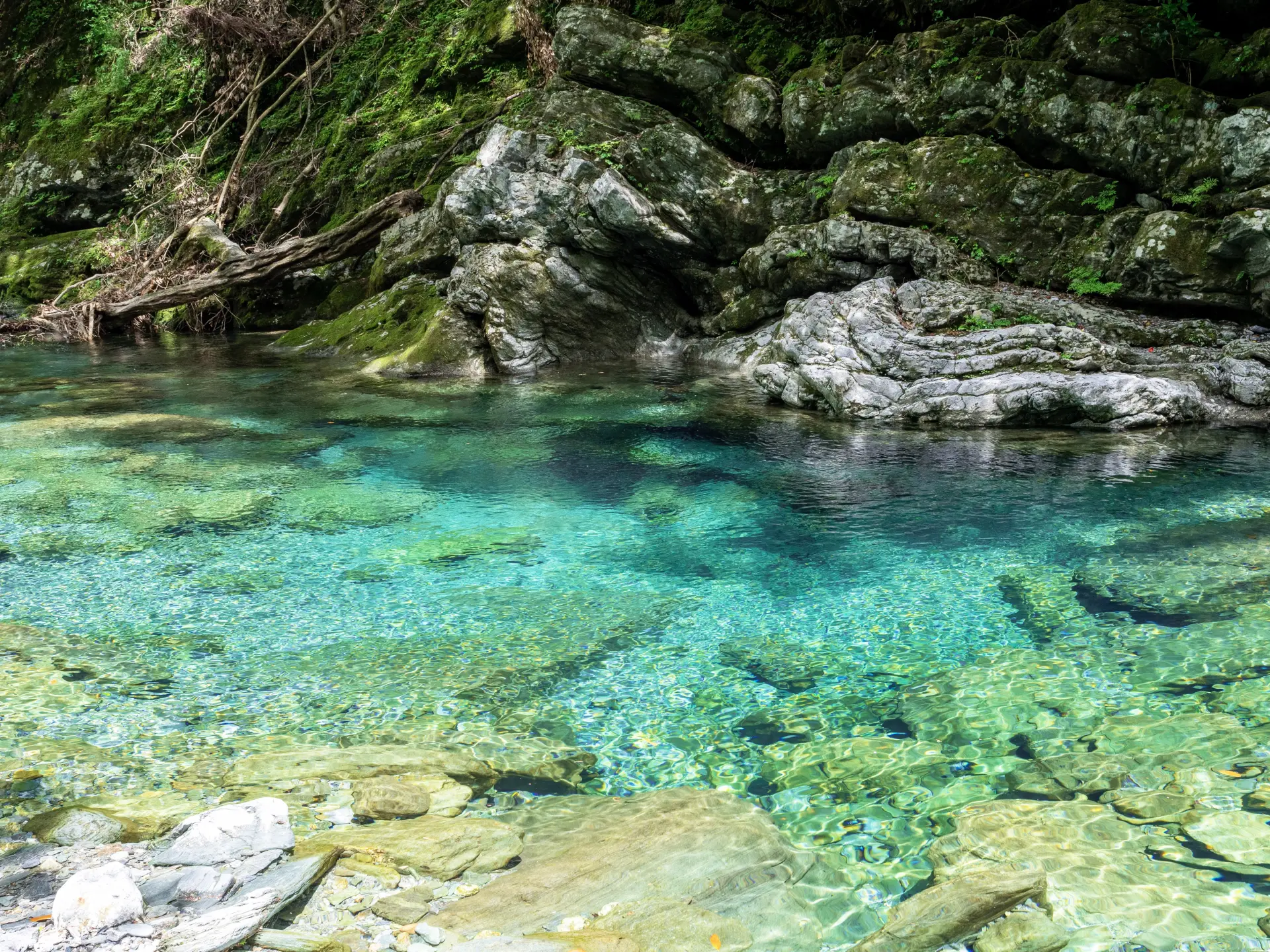
The Kyushu region | Great food and hands‑on experiences
Kyushu is one of Japan’s four main islands, located to the southwest of Honshu.
Its north side faces the Sea of Japan and the Seto Inland Sea, while the south faces the East China Sea and the Pacific Ocean. It consists of seven prefectures: Fukuoka, Saga, Nagasaki, Oita, Kumamoto, Miyazaki, and Kagoshima.
Kyushu’s appeal lies in its rich nature and deep history and culture.
For example, Mt. Aso is famous as a volcanic area, and active volcano Sakurajima offers a powerful sense of scale. The region is also home to many of Japan’s leading hot spring resorts, such as Beppu Onsen and Yufuin Onsen.
In the port cities of Fukuoka and Nagasaki, you can enjoy local food, activities, and visits to historic sites.
Here are three popular spots, one each in Miyazaki, Kumamoto, and Fukuoka.
1. Takachiho Gorge
Takachiho Gorge is a V‑shaped ravine formed over tens of thousands of years, as the Gokase River eroded lava that flowed from eruptions of Mt. Aso.
The cliffs reach up to 100 meters high and average 80 meters, stretching for 7 km to create a spectacular landscape. The gorge is designated as a Place of Scenic Beauty and a Natural Monument by the Japanese government.
The main highlight is Manai Falls, which has a drop of 17 meters. It is selected as one of Japan’s Top 100 Waterfalls, and you can row a boat right up close.
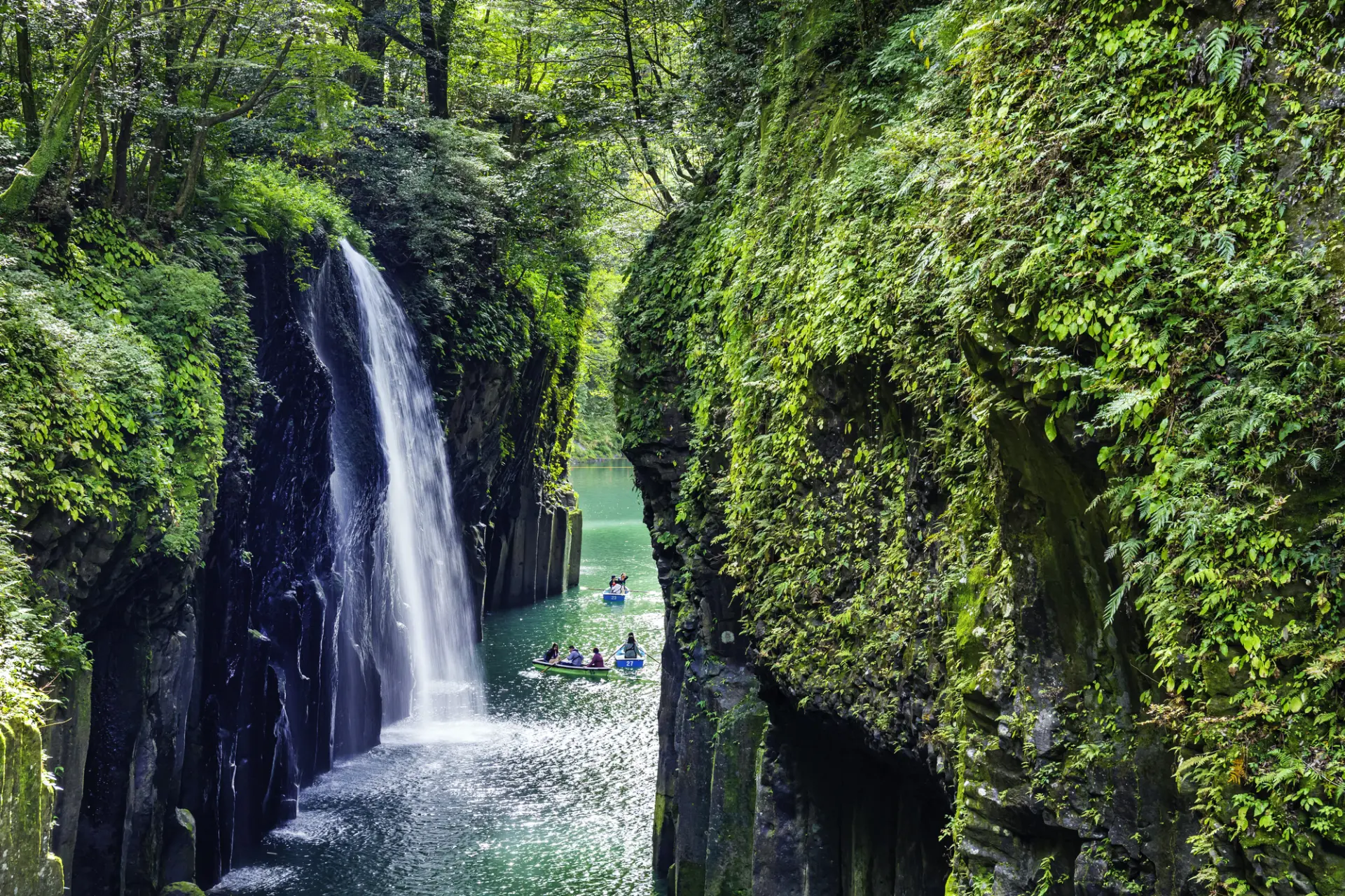
2. Kumamoto Castle
Kumamoto Castle is a renowned castle built in 1607 by Kato Kiyomasa. It was constructed using the most advanced techniques and enormous effort for its time, and later became the setting for many important events in Japanese history.
The main keep was destroyed in a fire during the Satsuma Rebellion in 1877, but the current keep was rebuilt in 1960.
The castle then suffered severe damage in the 2016 Kumamoto earthquakes. Restoration of the main keep was completed in March 2021.
Cutting‑edge seismic control technology was used, and the castle is now seen as a “symbol of recovery.”
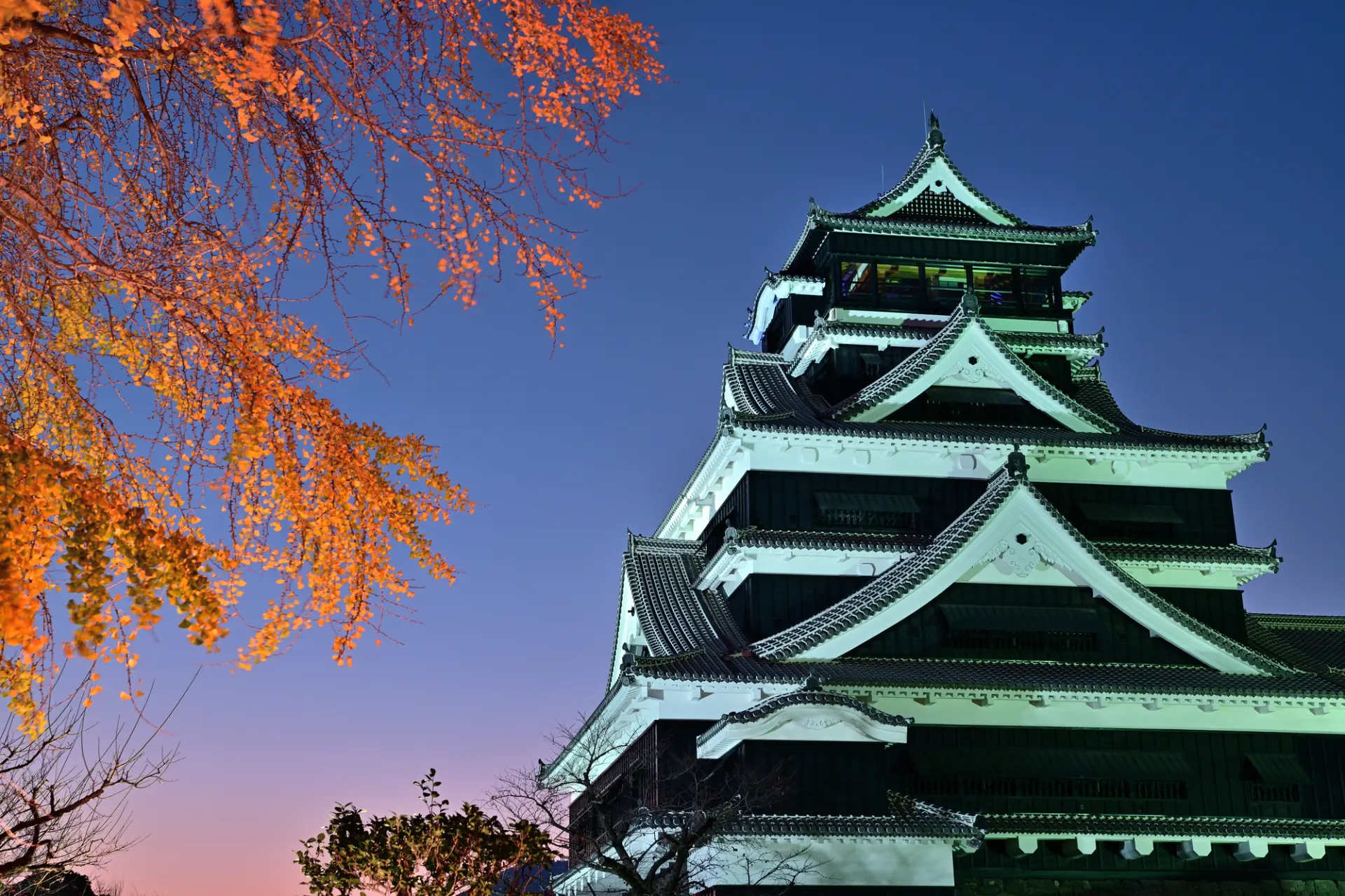
3. Dazaifu Tenmangu Shrine
Dazaifu Tenmangu is the head shrine of around 10,000 Tenmangu shrines across Japan dedicated to Tenjin, the deified Sugawara no Michizane.
Sugawara no Michizane was exiled from Kyoto to Dazaifu due to political maneuvering, despite being innocent, and passed away here.
The main shrine building stands over his grave. For more than 1,100 years, it has been carefully protected as a sacred site of Tenjin worship.
Michizane was a gifted scholar, statesman, and man of letters, so he is widely known as the god of learning. Many students visit from Japan and overseas to pray for success in exams.
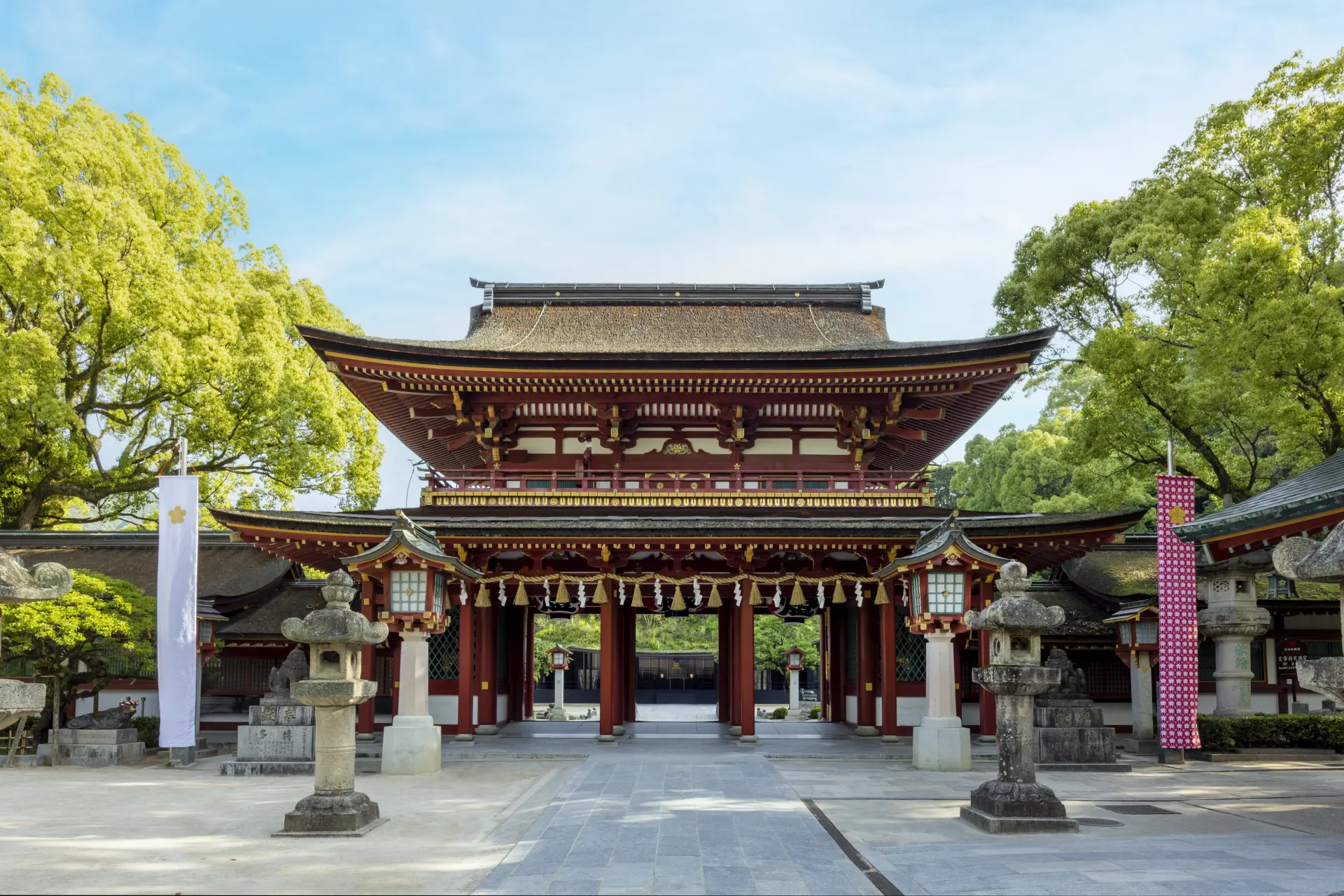
Okinawa | Stunning scenery and a unique culture
Okinawa lies at the southern end of the Japanese archipelago and occupies the southern half of the Nansei Islands. It consists of more than 160 large and small islands, centered on Okinawa’s main island and including the Miyako and Yaeyama Islands.
It is close to major Asian cities and plays an important role as Japan’s southern gateway.
Okinawa’s charm lies in its tropical culture, the relaxed pace of island life, and its emerald‑green sea.
There are many things to see, such as the Shurijo Castle area where the history of the Ryukyu Kingdom still remains, traditional performing arts like Eisa and Kumi Odori that are woven into daily life, and food that makes the most of the warm climate.
The clear waters also make Okinawa world‑famous for marine sports and diving, offering experiences you will not find elsewhere.
Here are some classic spots you should not miss in Okinawa.
1. Okinawa Churaumi Aquarium
Okinawa Churaumi Aquarium is a popular attraction located inside Ocean Expo Park in Okinawa.
From the 4th floor of the building, you take an escalator down to the 3rd floor to reach the entrance. The layout then takes you down through the 2nd and 1st floors, as if you are diving deeper into the sea. A majestic underwater world unfolds, filled with the mysterious creatures of Okinawa.
The main attraction is the huge “Kuroshio Sea” tank, where you can see the world’s largest fish, the whale shark, and reef manta rays, the first in the world to be bred successfully in captivity.
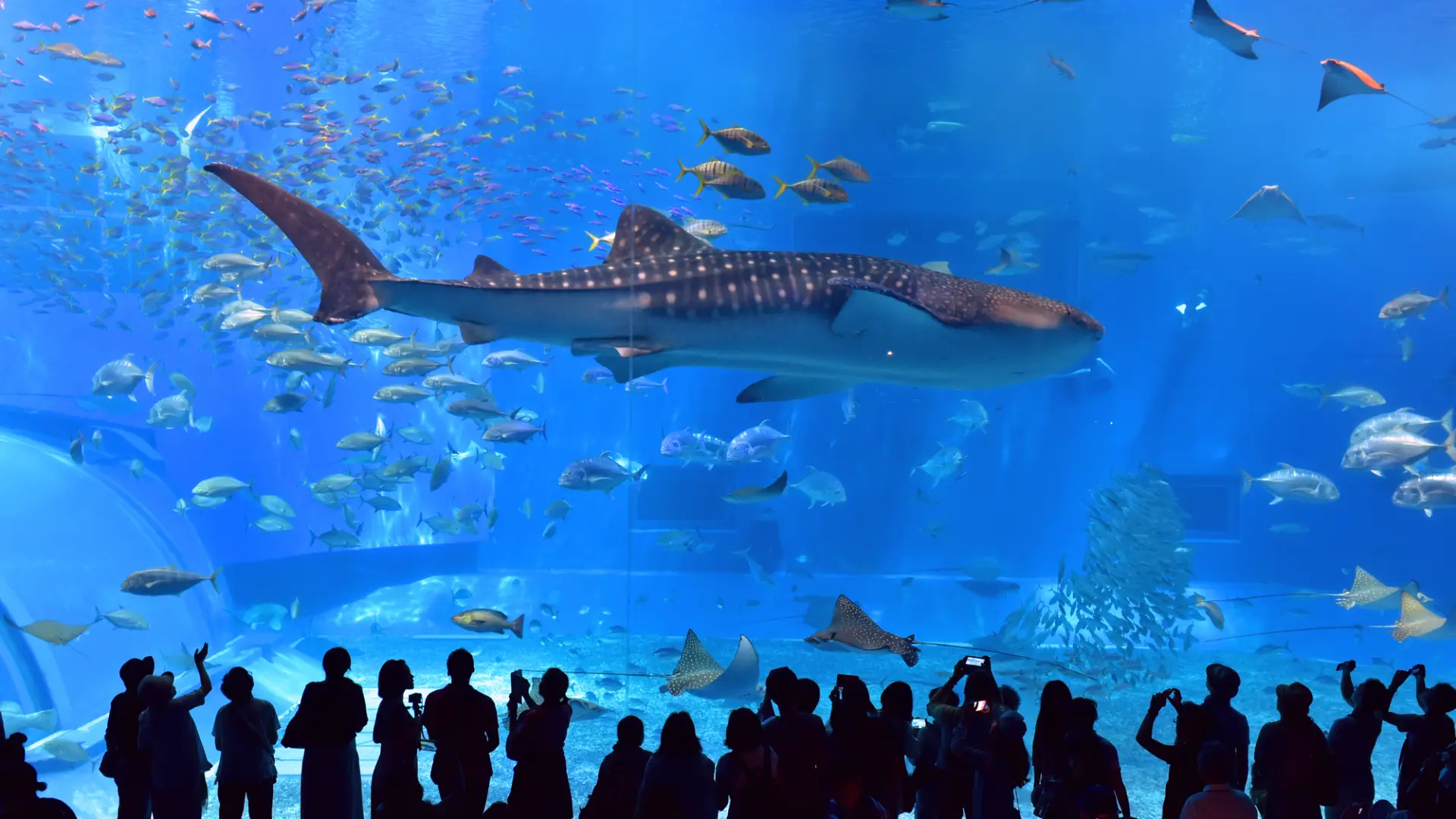
2. Shurijo Castle Park
Shurijo Castle is Japan’s only red castle, painted a vivid vermilion, and is an enduring symbol of Okinawa.
From 1429 to 1879, for roughly 450 years, it stood as the proud political, diplomatic, and cultural center of the Ryukyu Kingdom.
It is located on a low hill overlooking Naha and is surrounded by gently curving stone walls.
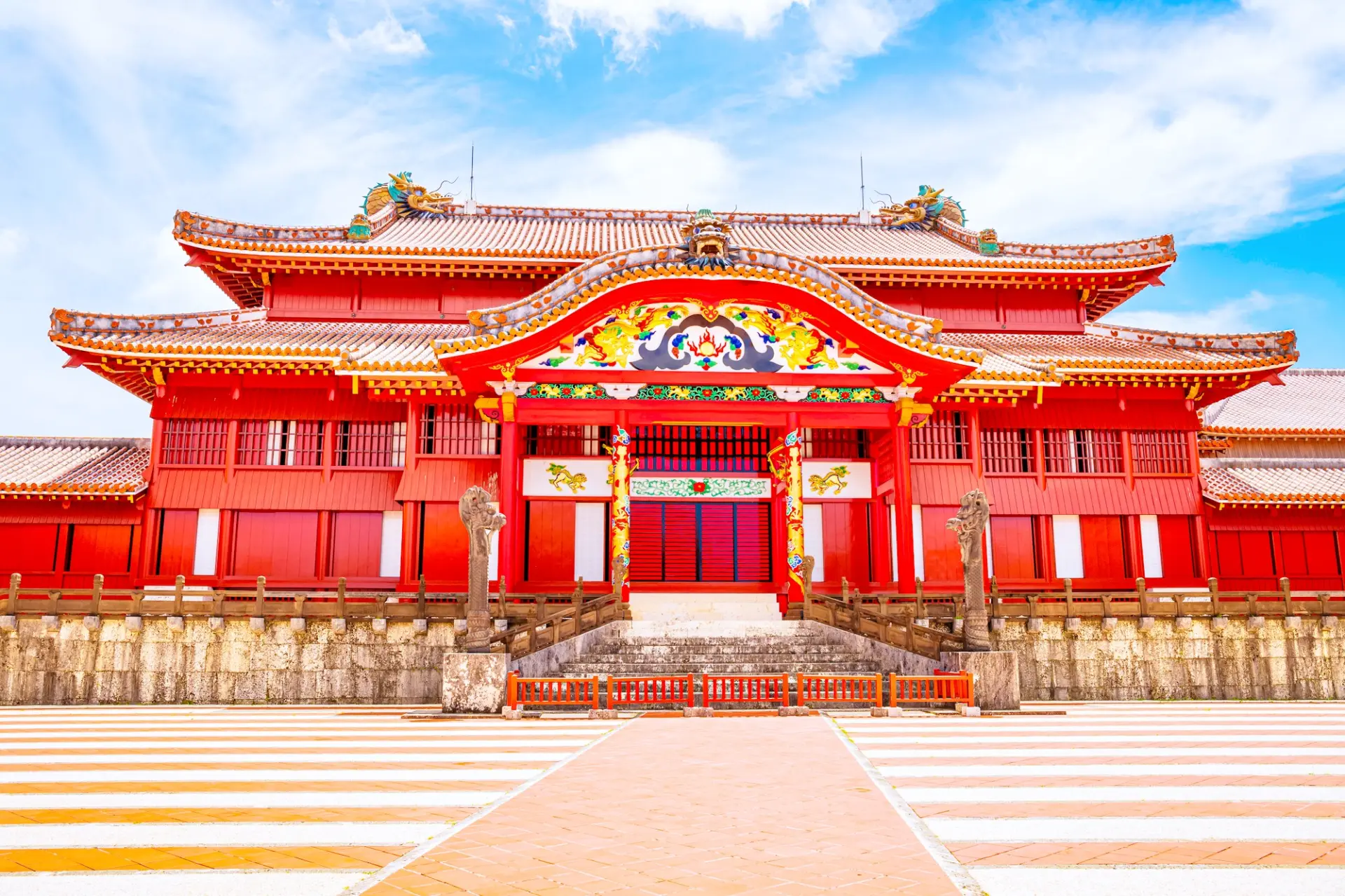
3. Naha Kokusai-dori Shopping Street
Naha Kokusai-dori Shopping Street is Okinawa’s most famous main street, located in the heart of Naha City.
It is the city’s largest entertainment district and also a major center of commerce. With the concept of being “a people‑friendly, walkable street,” it is affectionately known simply as “Kokusai-dori.”
The Approx 1.6 km street is lined with around 600 businesses, including restaurants, souvenir shops, department stores, cafés, variety shops, and hotels. It is always lively with visitors from Japan and abroad.
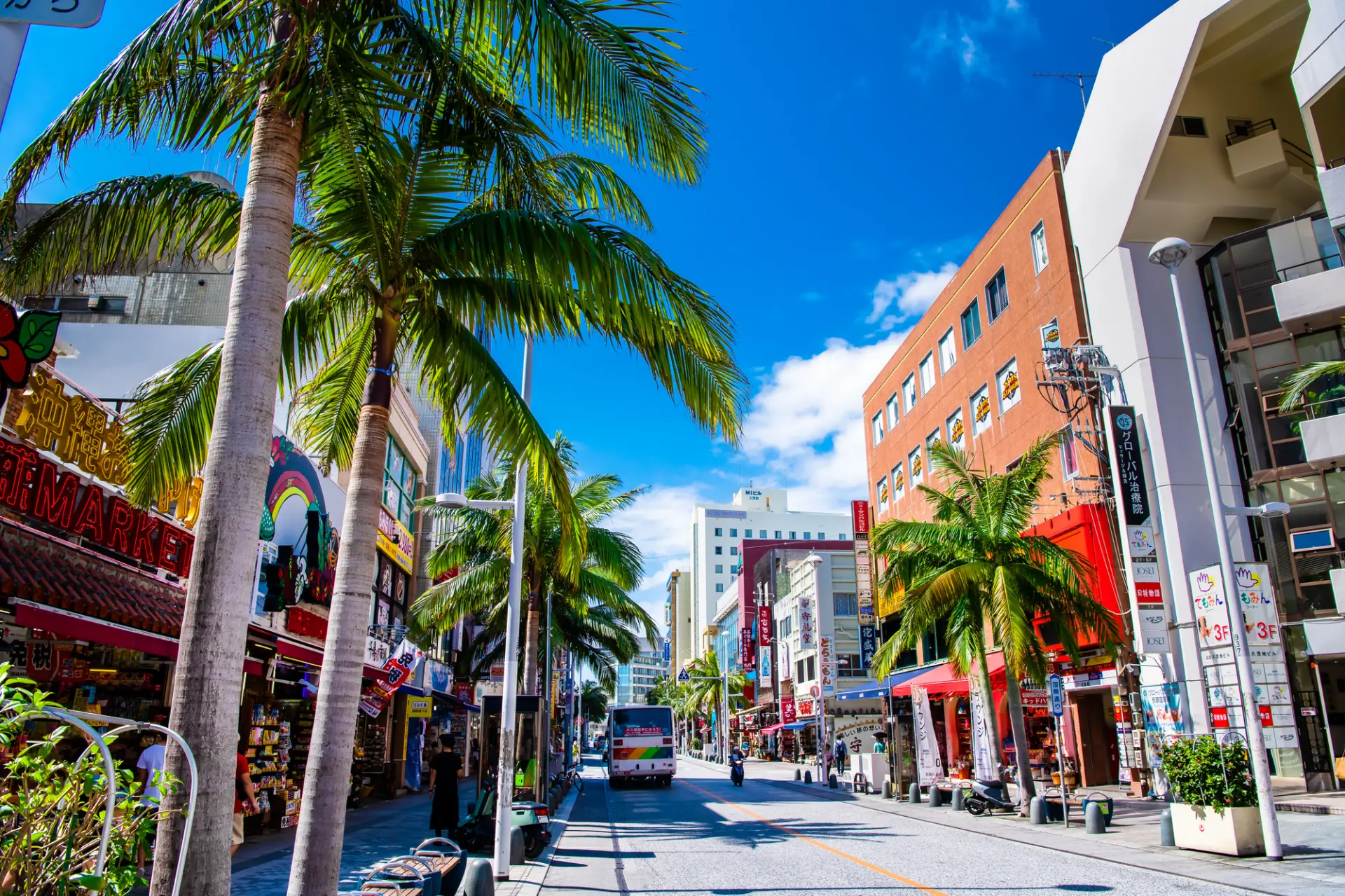
Highlights to help you avoid encounters with bears
If a bear suddenly comes face‑to‑face with a person at close range, it may attack out of surprise to protect itself.
That is why it is important to take steps in advance so you do not end up meeting a bear at close range.
Here are four easy actions you can put into practice. Keep them in mind when you go out.
Make noise so bears can sense your presence
Bears generally try to avoid people, and they have an excellent sense of hearing and smell.
If they sense human presence through sound or scent, they usually feel danger and move away. So making noise as you move is an effective way to let them know you are there.
Letting bears notice you and avoiding sudden close encounters on both sides helps prevent accidents.
Here are some specific methods.
Pay special attention at corners and in areas with poor visibility.
- Wear a bear bell or electronic whistle and keep it sounding while you walk
- Travel in groups to make yourselves appear larger (solo hiking is not recommended)
- Walk while calling out in a voice loud enough to talk to someone at a distance (clapping your hands also works well)
- If you see a bear nearby, call out in a firm voice so it notices your presence
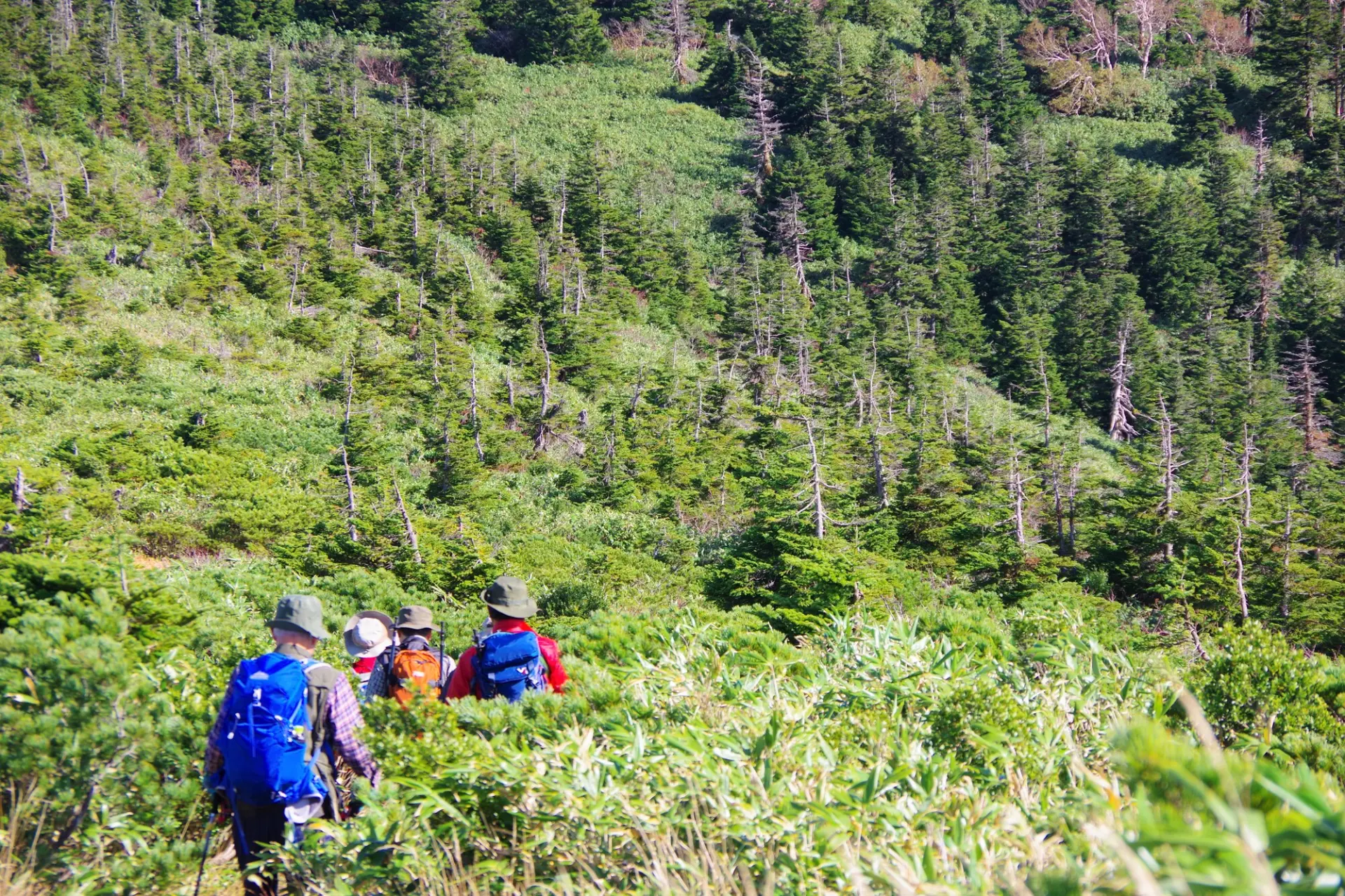
Avoid going out at dawn and dusk
Bears are crepuscular animals, meaning they are most active at dawn (around 4:00–8:00) and dusk (around 17:00–20:00).
During these times, they are more likely to come down near villages in search of food, and the risk of encounters increases in mountain areas, along rivers, and in farmland.
You should avoid being active during these hours as much as possible.
If you must go out then, take thorough precautions to stay safe.

Turn back if you find signs of bears
If you find any of the following signs in the mountains, there is a high chance that a bear is nearby.
Let the bear know you are there and keep your distance, then head back to a safe place without hesitation.
- Footprints
- They clearly show five toes. The front paw is round with large pads, while the rear paw is long and oval, with the heel touching the ground.
- Scat
-
It forms large clumps, roughly the size of one or two fists. Because what the bear eats, such as fruit seeds and plant fibers, often passes through undigested, the smell is not usually very strong.
* If there is a strong foul odor, it is likely to be from another animal. - Claw marks and antler rubs
-
Several parallel scratches on tree trunks or bark are a typical sign.
* Stripped bark (“kuma‑hagi”) and fur stuck where a bear has rubbed its body against the trunk are also well‑known traces.
Create an environment that does not attract bears
Camping is one of the situations where you are more likely to encounter bears.
If you plan to camp in an area where bears appear, take the following steps so you do not attract them.
- Thoroughly manage food and garbage
-
・Store food and food waste in sealed containers and do not keep them inside your tent
・After meals and before going home, clean up thoroughly so you do not leave any smells behind
・Do not leave trash lying around. Throw it away in designated places or take it home with you
・Do not leave fish you have caught unattended - Avoid artificial scents
-
・Avoid using perfume, fabric softeners, and strongly scented detergents
* Bears have an excellent sense of smell and may mistake scents for food - Do not cook or eat inside your tent
-
・Ideally, keep a distance of around 100 m between your tent and cooking area
・Think about the layout so that smells are less likely to drift downwind - Check the campground’s safety equipment
- ・Choose facilities that have electric fences or other barriers to keep bears away
How to respond if you encounter a bear, by situation
As mentioned above, bear sightings have increased sharply in recent years, and sightings in residential areas and tourist spots are now frequently reported.
Advance safety measures are very important, but in bear habitat you never know when or where you might run into one.
To protect yourself and avoid harm, here is how to respond appropriately if you encounter a bear, organized by situation.
If you notice a bear in the distance
If you spot a bear far away, the most important thing is to stay calm and quietly move away from the area.
If the bear has not noticed you, make some noise to let it know you are there.
Watch how the bear reacts. Do not turn your back on it, and slowly back away while keeping a safe distance.
At this time, do not suddenly shout or start running. That could startle the bear and cause it to behave unpredictably.
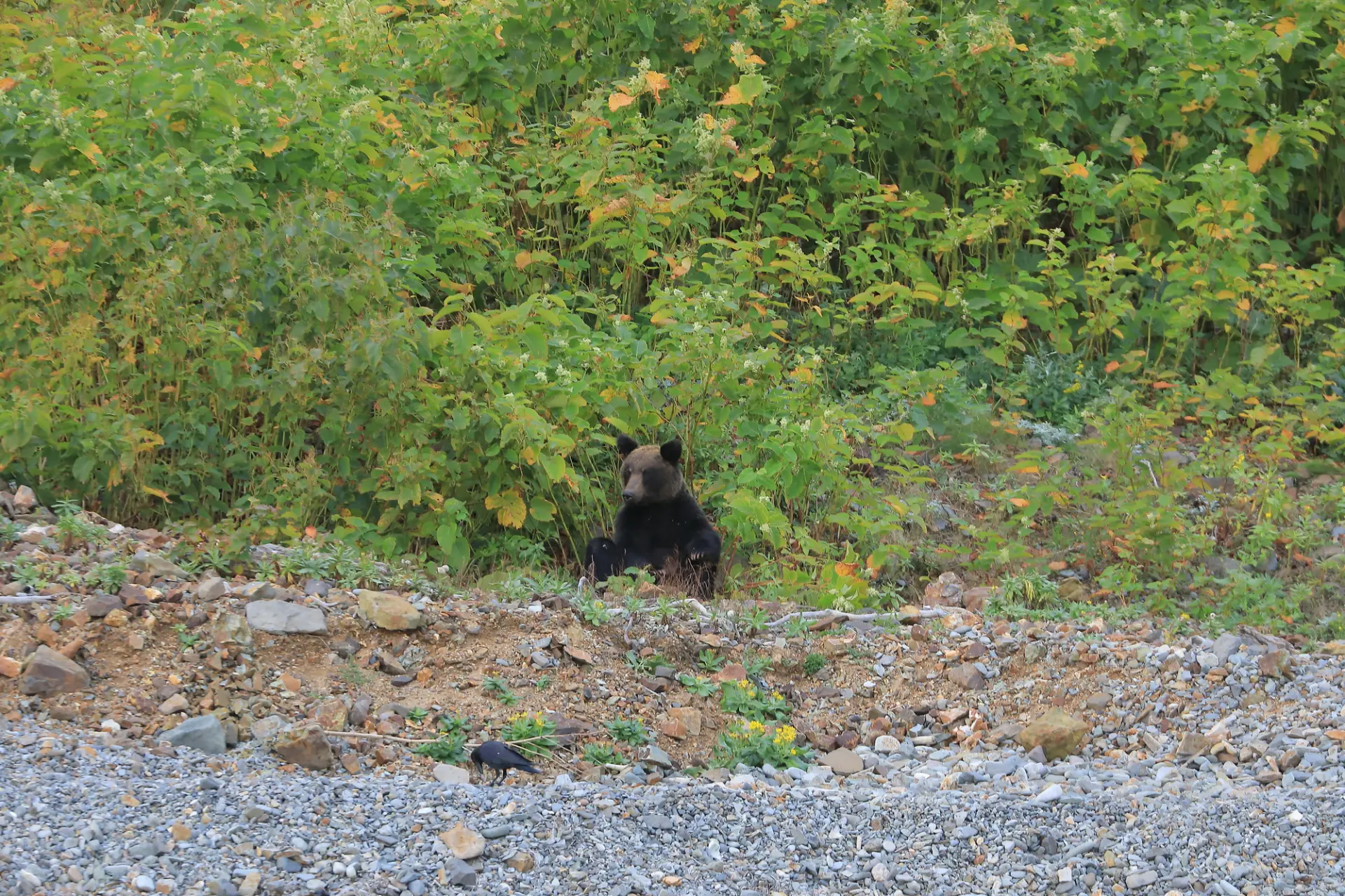
If you notice a bear nearby
If you notice a bear at close range, the most important thing is to stay calm and assess the situation.
Bears tend to chase things that run, so avoid turning your back or running away. Instead, keep your eyes on the bear and slowly back away to increase the distance.
Keep quietly talking so the bear knows where you are, and move carefully to a safe place without making any sudden movements.
Even if the bear charges at you, it may be a bluff charge meant to scare you. Try not to panic.
If it actually looks like it is going to attack, lie down on the ground and use both hands to protect your face and the back of your neck, and take a defensive posture.

If you suddenly encounter a bear at very close range
If you suddenly encounter a bear at very close range, there is a high chance it will react aggressively, and there is no perfect way to defend yourself.
Bears often try to claw or bite the face and head with their forearms, so it is vital to immediately lie face down and cover your face and head with both hands to protect them.
Be prepared to be attacked, and focus on minimizing fatal injuries as much as possible.
In many cases, a backpack acts like a protective shield, and using bear spray can also help you avoid the worst‑case scenario.
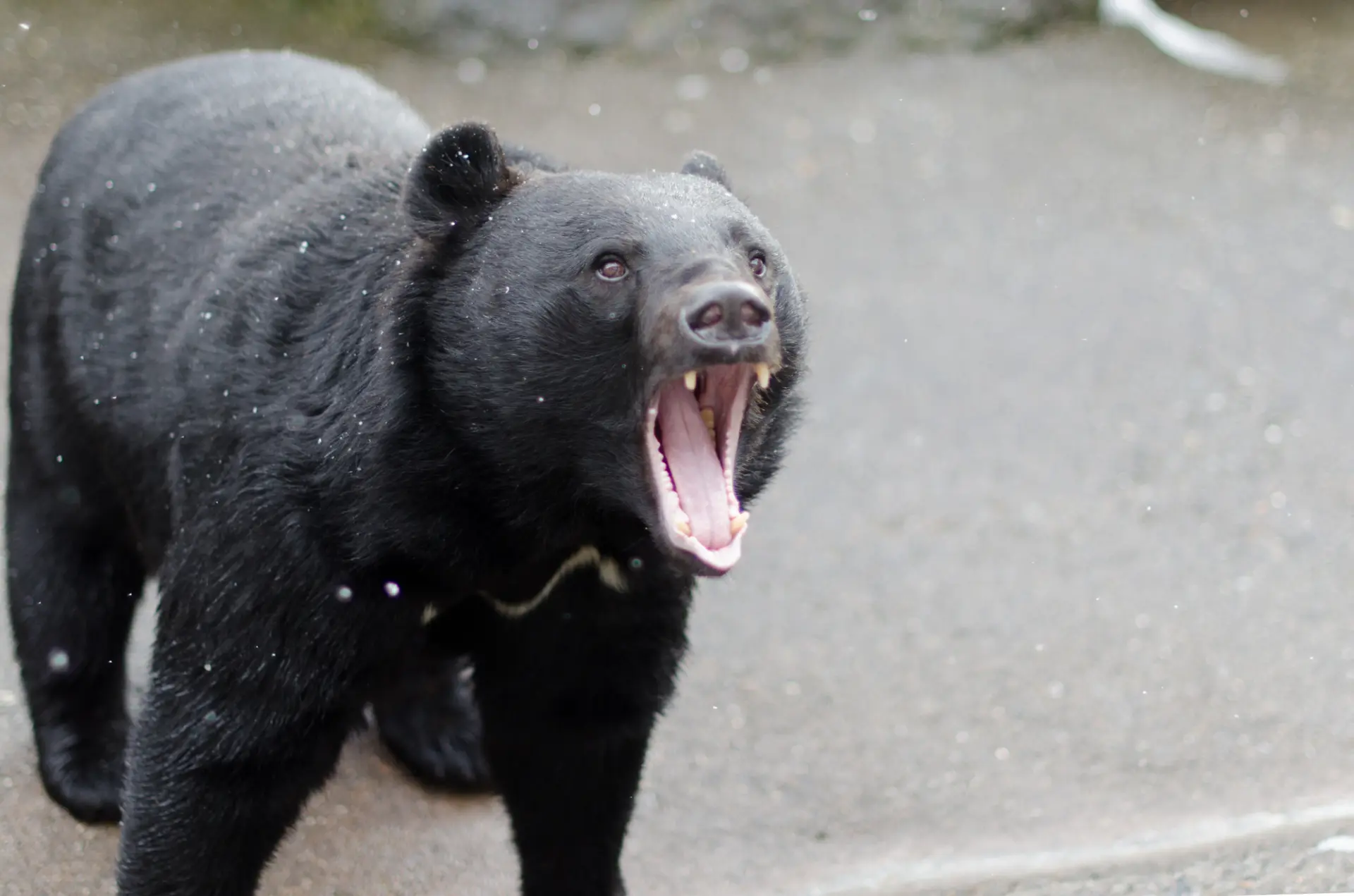
If you encounter a mother bear with cubs
If you encounter a mother bear with cubs, your top priority is to move away from the area quickly without turning your back.
Mother bears are extremely nervous and wary as they try to protect their cubs, and are more likely to behave aggressively, so you need to be especially careful.
Even if you only see the cubs, the mother is almost always nearby, and if you carelessly approach them, she may charge at you.
Depending on the situation, share information with people around you and move together to a safe area to reduce the risk of injuries.

Bear safety items you will want to have
Finally, here are some bear safety items.
Having these will reduce your risk of encountering a bear, and increase your chances of avoiding injury even if you do run into one.
They are easy to get, so if you plan to visit mountainous or nature‑rich areas, it is a good idea to buy the items that suit you to help stay safe.
Bear bells to alert bears to your presence
A “bear bell” is a small bell used during activities like hiking or camping to let bears know that people are nearby.
Hang it from your backpack or belt so it rings as you walk. This helps reduce the risk of running into a bear unexpectedly.
It is especially useful where visibility is poor (bends in the trail, dense undergrowth), where your footsteps are hard to hear (along streams, forest floors covered in fallen leaves), and when you are on your own.
However, the sound is easily affected by wind direction, terrain, and time of day, so it is best to use it together with other gear.
You can buy them at mountaineering gear stores, outdoor shops (such as Montbell and Helly Hansen), electronics retailers (such as Yodobashi Camera), and online shops (such as Amazon).
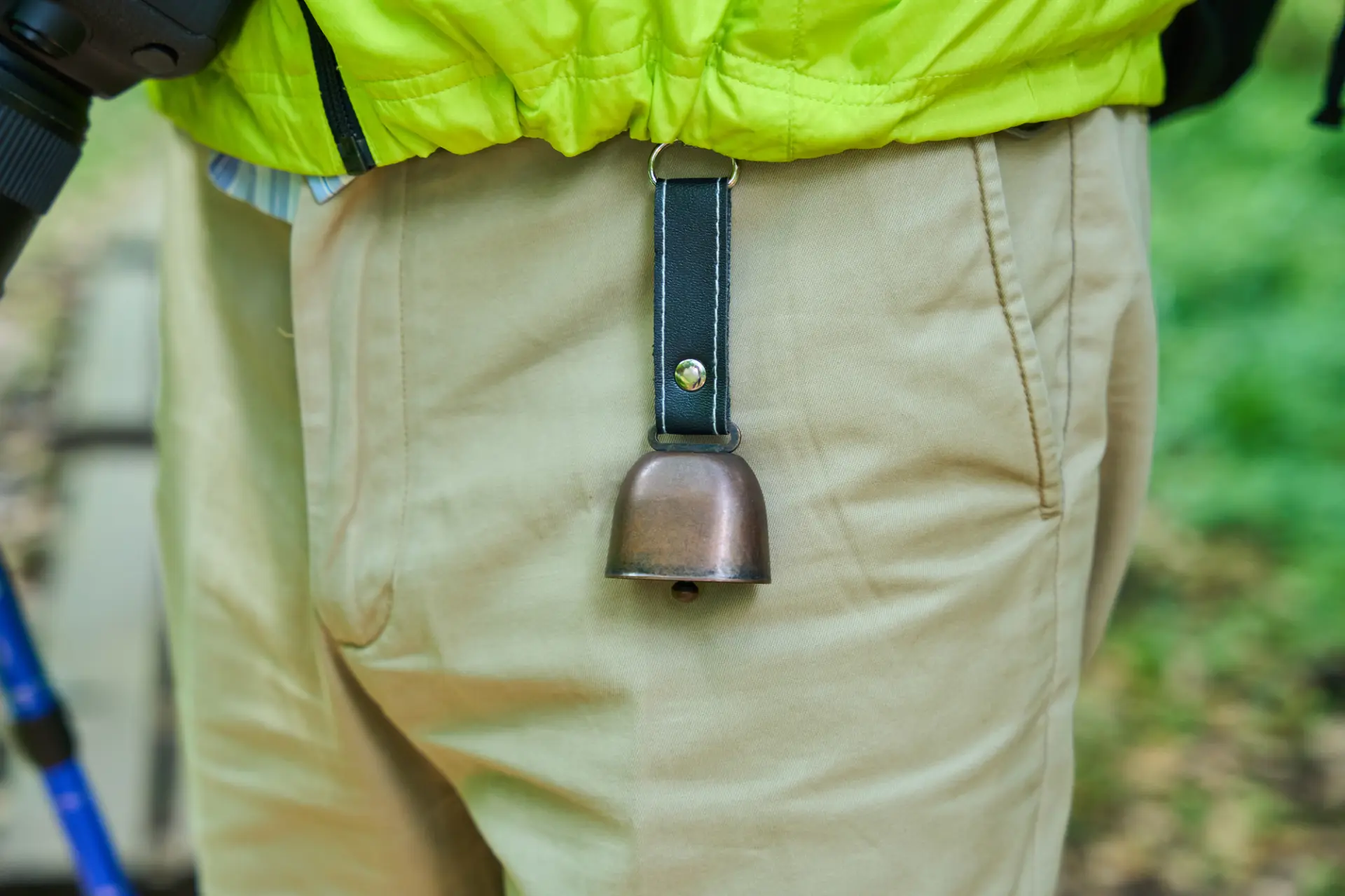
Portable radios to use together with bear bells
A “portable radio” is another item used to let bears know that people are around, just like a bear bell.
Bears tend to dislike certain sound frequencies, and playing the radio while you walk is thought to act as a warning sound to them.
A radio is also a useful tool for getting real‑time weather and disaster information, and helps you stay safe in higher‑risk environments.
They are especially effective when used in mountainous areas and other places with poor reception, such as during hikes and camping trips.
You can buy them at electronics retailers, online shops, and outdoor stores.

Electronic whistles and bear horns that scare bears away with loud sounds
“Electronic whistles” and “bear horns” are items that produce loud sounds instantly and are used to scare bears away.
Electronic whistles are lightweight and weather‑resistant. You can sound them repeatedly at the touch of a button, making them suitable in places where natural sounds are loud, such as dense undergrowth and along streams.
Bear horns use compressed gas to produce very loud sounds of up to 130 decibels, which can be heard far away and may drive bears off before they approach.
The main purpose of both is “to use sound to let bears know people are nearby and reduce sudden encounters,” so be careful how you use them.
As with bear bells, you can buy them at mountaineering gear stores, outdoor shops, and online shops.
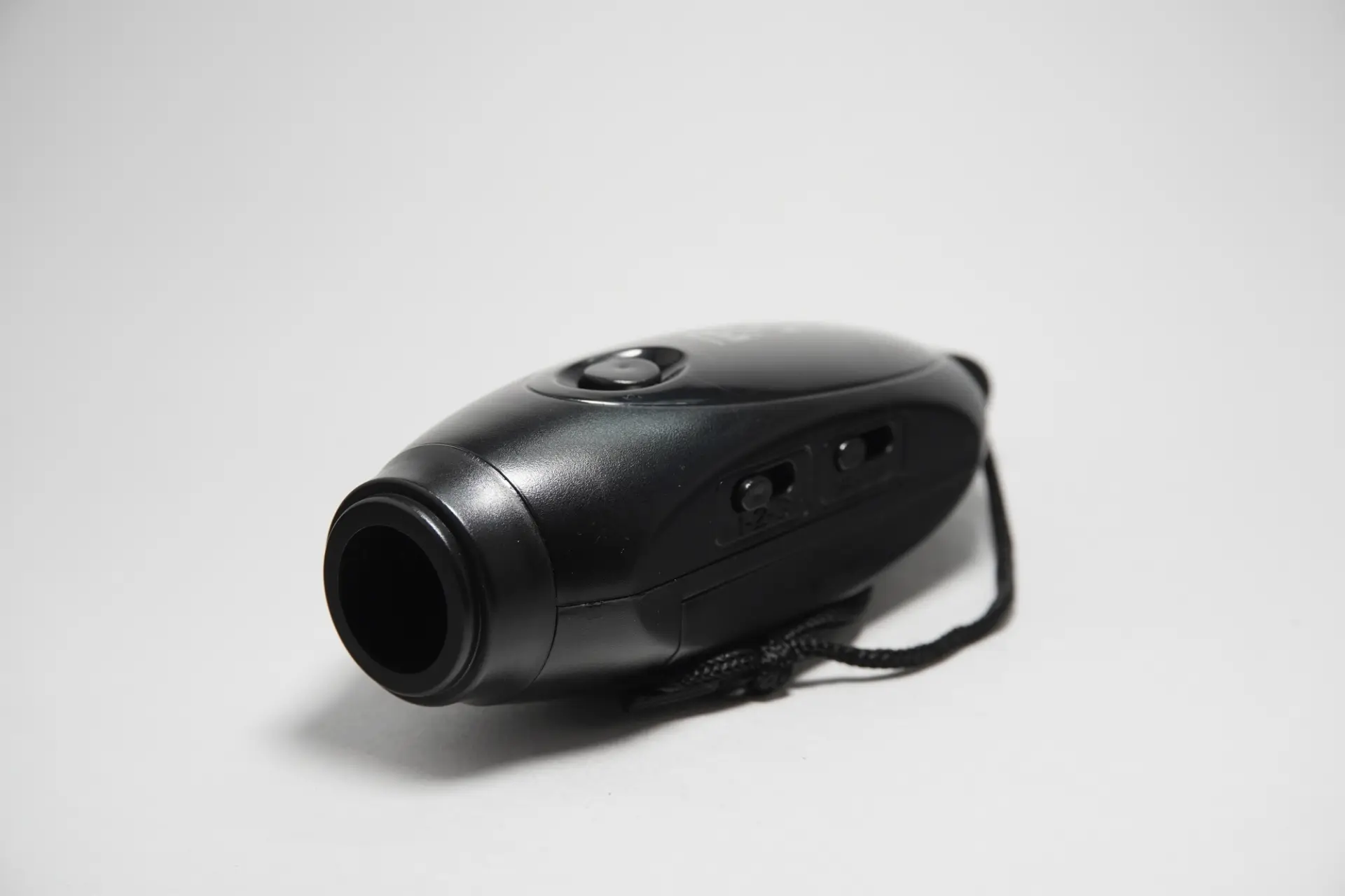
Bear spray for use at very close range
“Bear spray” is designed to strongly irritate a bear and interfere with its vision and movement, in order to stop an attack.
It contains capsaicin derived from chili peppers as its main active ingredient. When you spray it toward a bear’s eyes, nose, and throat, it temporarily causes pain and a burning sensation, giving you time and distance to escape.
It is useful when moving around at times when bears are most active, during close encounters, and in emergencies where there is no escape route.
However, you must learn in advance how to use and carry it properly, and be aware that you generally cannot take it onto public transportation.
You can buy bear spray at mountaineering gear stores, outdoor shops, online shops, and specialized security equipment stores.
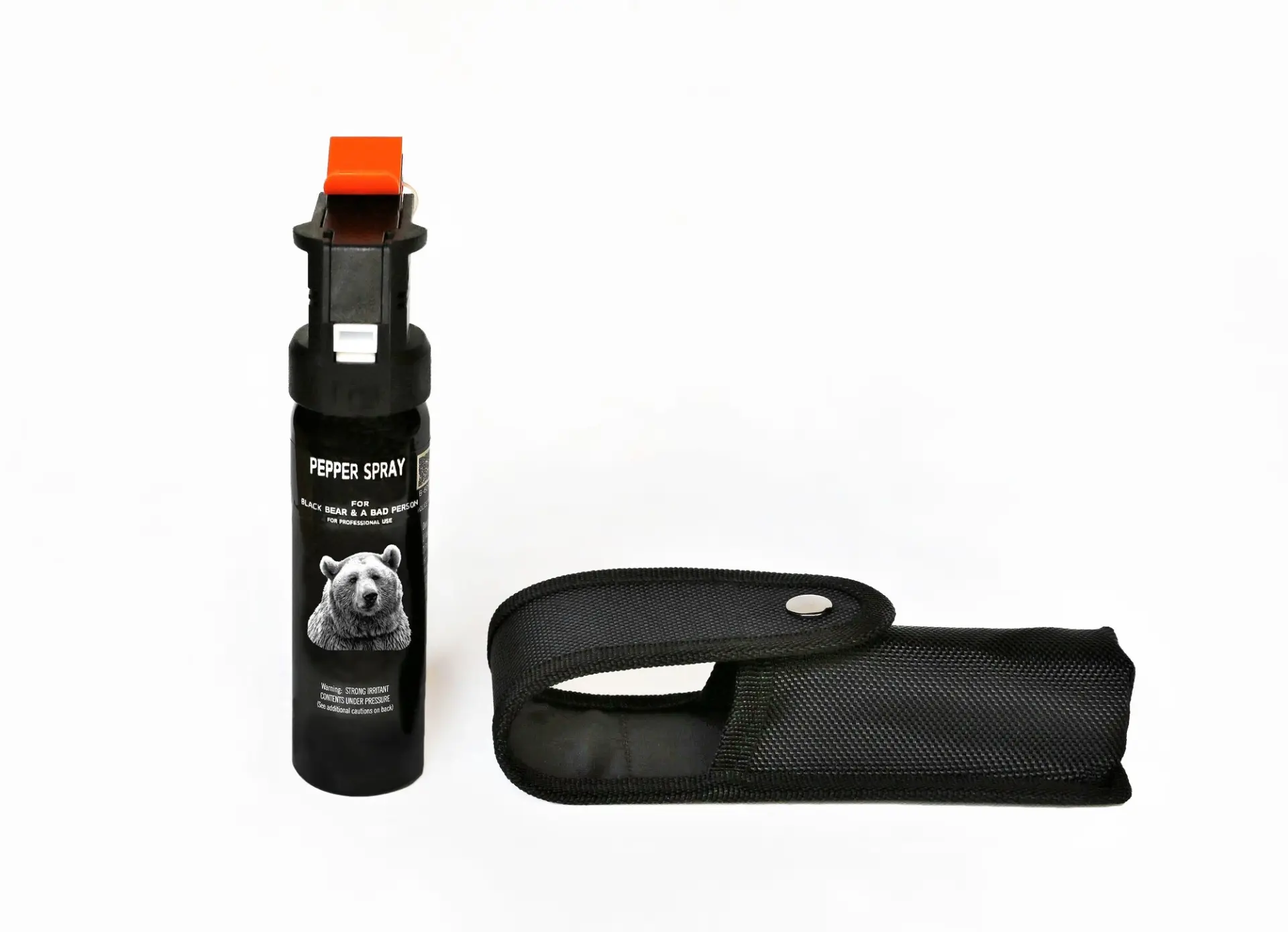
FAQ about bears in Japan
Q
What should I do if I encounter a bear in Japan?
If you encounter a bear in Japan, stay calm, keep it in sight, and slowly back away without turning your back. Do not run or shout.
Q
Where do bears live in Japan?
In Hokkaido, brown bears live across almost the entire island. On Honshu and Shikoku, Asian black bears live mainly in mountainous areas. There are no wild bears in Kyushu or Okinawa.
Q
Do bears also appear in towns and tourist areas?
In recent years, sightings of bears in town centers have increased, especially in Hokkaido and the Tohoku region. Bears do not always attack people, but you still need to be cautious.
Q
Are there bears in Tokyo?
In Tokyo, bears have been sighted in western mountainous and residential areas such as Hachioji, Ome, Okutama, and around Mt. Takao.
Q
Are there bears in Osaka?
There are no stable bear populations confirmed in Osaka Prefecture. However, bears from neighboring prefectures are increasingly entering temporarily, so the alert level is rising.
Wrap Up
This article has given a comprehensive overview of bears in Japan, from numbers of sightings and incidents to safety tips and deterrent gear.
It is true that bear sightings have increased in recent years and the risk of encounters is higher. At the same time, central and local governments are rolling out many measures in response.
If you get accurate information, have the right gear, and follow local rules and safety notices, there is no need to be more afraid than you have to be.
Take sensible precautions and enjoy sightseeing in Japan.



